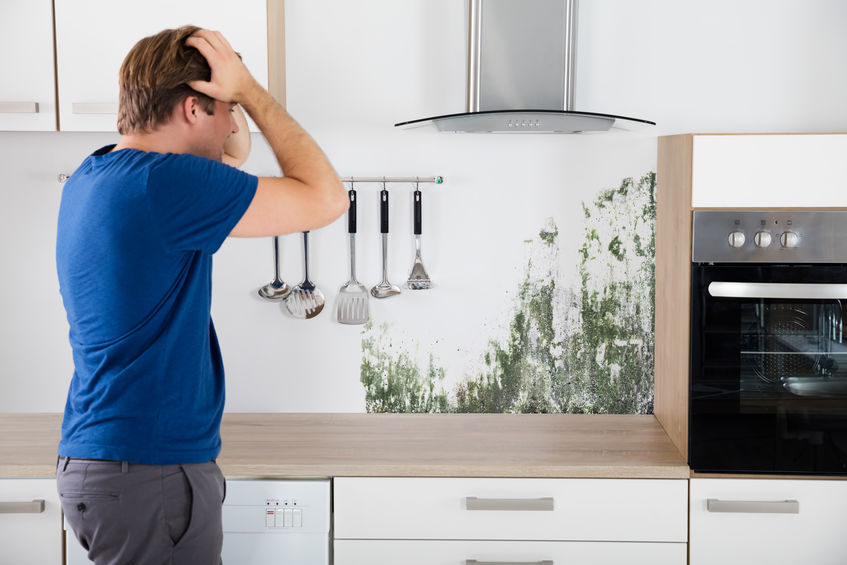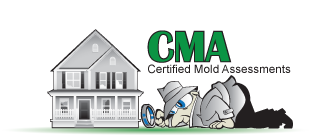 Most people usually see mold as an issue that only occurs in older properties mainly because of the age of the property itself. However, it is still possible to find mold in new homes that have been exposed to moisture. Different construction materials react differently to the levels of moisture in the environment based on their porous nature. Since mold can cause severe health problems, it is important to be well informed about the dangers of exposure and the action to take if you find mold. This article looks into five ways to tell if the construction of a home makes it susceptible to mold.
Most people usually see mold as an issue that only occurs in older properties mainly because of the age of the property itself. However, it is still possible to find mold in new homes that have been exposed to moisture. Different construction materials react differently to the levels of moisture in the environment based on their porous nature. Since mold can cause severe health problems, it is important to be well informed about the dangers of exposure and the action to take if you find mold. This article looks into five ways to tell if the construction of a home makes it susceptible to mold.
- Mold on Drywall
Drywall has a highly porous surface that easily absorbs moisture, which can bring about mold problems. One of the major disadvantages of drywall is that you can never get rid of mold completely once it has been infested. The contaminated section needs to be removed before it can be replaced by new drywall. Although most manufacturers claim to offer drywalls that are resistant to mold and moisture, the truth behind their reasoning is that they just have a lower risk of mold infestation. Drywall is one of the best food sources of mold and is not waterproof to mold invasion.
- Mold on Carpet
Mold can easily hide under permanent carpeting because it traps moisture and liquid spills that get absorbed underneath the carpet. In addition, carpets also confine dust, dirt and other organic debris that provides an ideal source of food for mold spores. Most homeowners might be deceived into thinking that their carpet is completely dry after vacuuming while it is damp and wet underneath. Not only will mold affect your carpet but also your floorboards since both of them trap moisture and organic debris.
- Backyard Flooding
One may be relieved to find out that no water entered their home after heavy rainfall. However, if your backyard experiences flooding every time there is a heavy downpour, then your home will eventually be affected by water intrusion. The flooded water in your backyard can cause significant damage to the foundation if it slowly seeps into your basement. Over time, you will experience mold growth that attracts high costs of remediation. Extensive flooding in the backyard may require professional help.
- Mold on Wood
Wood is a common building material used in furniture and structural elements of a home. Its porous nature makes it vulnerable to mold growth since it also acts as an ideal source of food. Over time, mold devours the nutrients on various wood surfaces, which might require necessary replacements in the future. Storm drain mold might occur as a result of a leaking roof or damaged gutters. Ceiling boards made of wood may start to rot after a while creating a conducive environment for mold to grow. Paddles of water on the ceiling caused by roof leaks can cause a significant mold problem in your home.
- Mold on Concrete
Although concrete is not an organic material, it can trap dirt and dust that provide a source of food for mold. It slowly absorbs moisture which takes some time to become apparent. The best way to prevent mold from growing on concrete is to remove organic materials that acted as a food source or scrub the area with a mold killing solution. Keeping your concrete dry keeps molds at bay because they lack a food source to grow on.
New Construction Mold and Mold Remediation Issues
The speedy techniques used when constructing modern houses are one of the primary factors why mold grows in new buildings. Most people who want to cut down on costs leave out some critical development stages while using substandard construction materials. There is a high possibility of disregarding the moisture that could be trapped inside the building material making it susceptible to mold. Mold remediation firms help potential homeowners solve the problem by repairing the damage beforehand. When you undertake a new construction project, it is important to hire professional contractors who can implement the best building practices that make it free from mold invasion.
The materials used and procedure involved in new building projects need to meet regulatory construction requirements. Even though the materials might be of high quality, poor construction work can still create a mold problem. Cutting off any sources of moisture is the key to preventing mold growth in your home.
